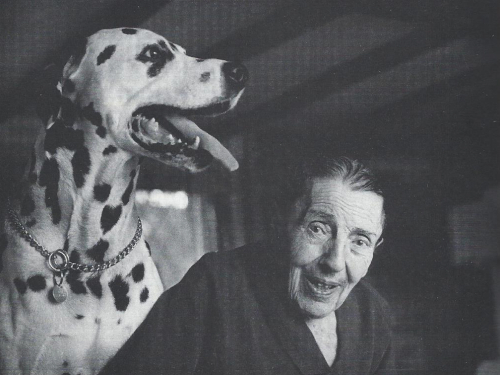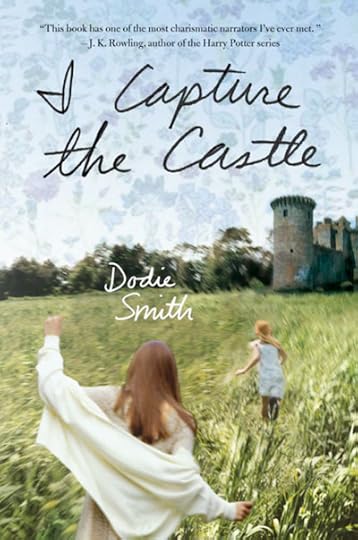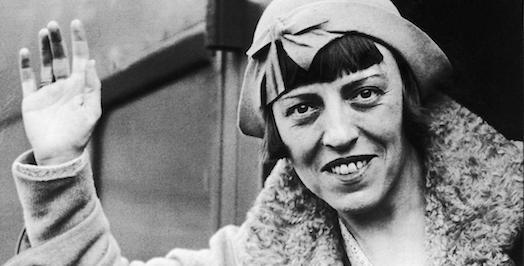Dodie Smith
Dodie Smith (May 3, 1896 – November 24, 1990) was born Dorothy Gladys Smith in Lancashire, England, and was one of the most successful female dramatists of her generation. The British novelist and playwright is best known for her novel The Hundred and One Dalmatians (later better known as The 101 Dalmatians) and the young adult novel I Capture the Castle.
Dodie Smith came to her love of theatre early, with many of her family members either enthusiasts or amateurs in that realm. She studied at the Academy of Dramatic Art, exploring a short career in acting before becoming a successful playwright and novelist.
Early life
Born as an only child to Ernest and Ella Smith, her father died in 1898 when she was two years old. Dodie and her mother moved in with her grandparents, William and Margaret Furber. She credits her theater-loving grandfather in her autobiography, Look Back with Love (1974), as one of the reasons she became a playwright.
At age ten, Dodie wrote her first play, and she began acting in small roles during her teen years at the Manchester Athenaeum Dramatic Society.
When Dodie was fourteen years old, her mother remarried and they moved to London with her new husband. Dodie attended school at St Paul’s Girls’ School and later at age eighteen, Dodie entered the Royal Academy of Dramatic Art. She landed her first acting role in Arthur Wing Pinero’s play, Playgoers.
See also: The Town in Bloom by Dodie Smith (1965)
Success in the theater
Dodie’s acting pursuits led her to land stints with a traveling YMCA company to entertain troops during World War I, as well as touring with the French comedy French Leave. She sold a movie script, Schoolgirl Rebels, under the pen name Charles Henry Percy and wrote a one-act play, British Talent.
In 1931 she wrote her first full-length play, Autumn Crocus, using the pseudonym C.L. Anthony. She need not have hidden behind her nom de plume, as the piece was quite successful. When the true identity was exposed, newspapers called her the “shopgirl playwright” because she had worked in retail stores.
Dodie wrote a string of successful plays that made it to the London stage in the 1930s and 1940s, including the aforementioned Autumn Crocus, as well as Call It A Day (the longest running of all her work), Dear Octopus, and Lovers and Friends.
I Capture the Castle
In 1939 Smith married Alec Beesley, who was a longtime friend and her manager from the furniture shop. The two moved to the U.S. in the 1940s due to his stance as a conscientious objector in Britain. Her homesickness for England inspired her to write I Capture the Castle, her first novel, which was published in 1948. It was an immediate hit and still enjoys a devoted following. It begins with the unforgettable line, “I sit here writing this in the kitchen sink.”
The Forgotten Authors series highlighting Dodie Smith in the U.K.’s Independent encapsulates I Capture the Castle as:
” … both a parallel to and the opposite of The Catcher in the Rye, published three years later. It should surely be regarded as an equal, but whereas Holden Caulfield became an eternal symbol for rebellion, Cassandra Mortmain, Smith’s teenaged heroine, was possibly hampered by her background. She is, after all, a naive, optimistic bohemian trapped in her family’s collapsing castle in the middle of nowhere, while her beloved father, a blocked one-time novelist who keeps the family in penury and isolation, struggles with his demons.”
The 101 Dalmatians
Dodie and Alex returned to England in the early 1950’s, much to Dodie’s delight. Her years in the United States were never completely content, as she suffered from homesickness and guilt at abandoning her country in time of war. During their time in America, the couple became friends with fellow writers, such as Christopher Isherwood and Charles Brackett.
After their return to England, Dodie’s The Hundred and One Dalmatians was published in 1956. Pongo, the four-legged main character, was named after Dodie’s own pet Dalmatian. The novel was adapted by Disney into a 1961 animated film, called One Hundred and One Dalmatians. Dodie wrote a sequel, published in 1967, called The Starlight Barking.
101 Dalmatians (1996 film) on Amazon
Film Adaptations
One Hundred and One Dalmatians was released to theaters in January, 1961 and was an immediate success with audiences. Critics generally liked it as well, though they didn’t put it in the same league as other Disney animated films. “While not as indelibly enchanting or inspired as some of the studio’s most unforgettable animated endeavors,” wrote Variety, “this is nonetheless a painstaking creative effort.”
In 1996, Walt Disney adapted the book into a live-action film, with the streamlined title 101 Dalmatians. The live-action version wasn’t as well received. One critic encapsulated the general response: “Neat performance from Glenn Close aside, 101 Dalmatians is a bland, pointless remake.”
Additionally, a British film adaptation of I Capture The Castle was released in the UK in 2003, and shortly thereafter in the U.S. It’s available for streaming on Amazon.
These were the best known film adaptations from Dodie’s works, though there were others, including: Looking Forward (1933, adapted from Service), Autumn Crocus (1934), Call it a Day (1937), and Dear Octopus (1943). All of these were adapted from plays rather than novels.
You may also enjoy: Quotes from I Capture the Castle
Later life
Dodie and Alec spent their last years in quiet seclusion in their country cottage in England where Dodie spent time working on her memoirs (starting with the phrase Look Back) and it’s been said Alec devoted his time to gardening. Charley, Dodie’s loyal Dalmatian companion at the time, become incredibly important to her well-being after Alec’s sudden death in 1987.
Dodie died in 1990 in England. She had named Julian Barnes as her literary executor, a job she thought wouldn’t be much work. Barnes writes of the complicated task in his essay “Literary Executions,” revealing among other things how he secured the return of the movie rights to I Capture the Castle, which had been owned by Disney since 1949.
Dodie’s personal papers are archived in Boston University’s Howard Gotlieb Archival Research Center, and include manuscripts, photographs, artwork, and her correspondence with esteemed literary friends, such as Christopher Isherwood and John Gielgud.
More about Dodie Smith on this site
Quotes from I Capture the Castle
Major Works
I Capture the Castle (1948)
The Hundred and One Dalmatians (1956)
The New Moon with the Old (1963)
The Town in Bloom (1965)
The Starlight Barking (1967)
It Ends in Revelations (1967)
Autobiographies
Look Back with Love: a Manchester Childhood (1974)
Look Back with Mixed Feelings (1978)
Look Back with Astonishment (1979)
Look Back with Gratitude (1985)
Biography
Dear Dodie by Valerie Grove
Selected Plays
Autumn Crocus (1931)
Service (1932)
Dear Octopus (1938)
More Information
Wikipedia
Reader discussion of Dodie Smith’s books on Goodreads
Dodie Smith page on Amazon
Film adaptations of Dodie Smith’s works
Looking Forward (1933, adapted from Service)
Autumn Crocus (1934)
Call It a Day (1937)
Dear Octopus (1943)
Animated film version of One Hundred and One Dalmatians (1961)
Live action film version of The 101 Dalmatians (1996)
I Capture the Castle (2003)
Visit and research
Dodie Smith’s Home – Dorset Square, London, U.K.
*This post contains affiliate links. If the product is purchased by linking through, Literary Ladies Guide receives a modest commission, which helps maintain our site and helps it to continue growing!
The post Dodie Smith appeared first on Literary Ladies Guide.








